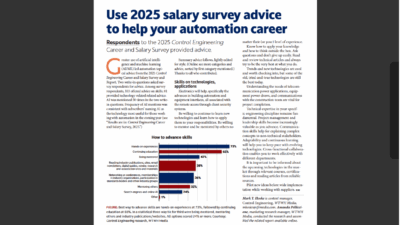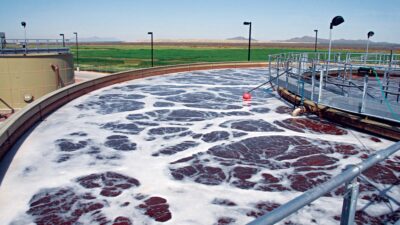Upgrading a plant's controls system can significantly boost efficiency and extend the life of existing equipment, rather than requiring full equipment replacement.

Controls system upgrade insights
- Upgrading a controls system boosts efficiency and extends the life of existing equipment without the high cost of full replacement.
- Modern control upgrades deliver optimized performance, remote access, and increased visibility across plant systems.
- Plants should upgrade when software or hardware is no longer supported or when integrating new equipment to ensure seamless operation.
In manufacturing, research and development, your business outcomes are only as good as your equipment. Running a reliable system with optimized performance and efficiency can provide a critical competitive advantage.
Buying industrial equipment isn’t like buying an iPhone. You don’t upgrade just because a new model is available. Most manufacturing systems include expensive, bespoke equipment designed to last for decades. A controls system upgrade can give this equipment a new lease on life for a fraction of the cost of equipment replacement.
Technology moves fast, and today’s control platforms are faster and more powerful than ever. They’re also designed to seamlessly integrate into existing plant networks.
Benefits of a controls upgrade
There are myriad ways a controls upgrade can give your plant’s productivity a boost. Here are just a few:
- Optimized performance: Modern control systems can collect, store and analyze tremendous amounts of data. They can provide operators critical information to boost energy efficiency, troubleshoot errors and reduce downtime. The computing power of an upgraded controls system can help you operate your entire plant more efficiently.
- Remote access: New controllers have remote support capabilities so you no longer have to be in front of a machine to troubleshoot it. “You can have fewer people looking over more processes,” said Dan Idzikowski, senior instrumentation and controls engineer at ACS. “You can monitor performance from anywhere in the facility using the plant network or even from outside using a secure web connection.” Combined with error alerting, your upgraded controls could automatically alert an on-call operator to a failure in the system, even if it happens during off hours. In some cases, the operator could log in to the system and either clear the alert or resolve the issue remotely.
- Increased visibility: A controls system upgrade is an opportunity to integrate disparate equipment and sensors into a common control network. You should be able to view information about your systems from any screen in the plant. This whole-network visibility helps operators make better decisions about how to prioritize their time.
When to upgrade your controls system
When the system is no longer supported
Your controls system has both software and hardware components. Both will eventually reach the end of their useful life.
When software versions are no longer supported by modern operating systems, it’s time to upgrade. Using legacy operating systems or operating unsupported software versions is not only inefficient, but it also puts your system at risk for viruses and cybersecurity threats.
When the manufacturer of your controllers stops supporting your legacy hardware, it’s time to plan for a controls system upgrade. If you’re left scouring eBay to find replacement parts, a minor hardware failure could have a ripple effect through your entire facility’s ability to operate.
“It can be a world of hurt if something goes down and you don’t have a stock of replacement parts,” Idzikowski said. “When you can no longer purchase your hardware direct from the distributor, it’s time to think about upgrading your system.”
When you’re upgrading integrated systems
When you’re upgrading mechanical systems, it’s best to complete a controls system upgrade at the same time to ensure the controllers can communicate effectively with the new equipment.
Whether upgraded controllers are talking to worn-out equipment or legacy controllers are trying to understand more powerful new equipment, at a certain point, the age difference between systems can just be too much.
“The best thing to do is definitely to upgrade across the board,” Idzikowski said. “Software, controlling hardware and mechanics. Just upgrading one system does not mean your process has been upgraded.”
A controls system upgrade also creates an opportunity to bring all the controls systems on your site under one umbrella. Maintaining multiple controls systems creates issues with visibility, maintaining parts inventory, managing software upgrades and maintaining training requirements.
Under the right circumstances, a controls system upgrade can maximize your facility’s efficiency and give you a competitive edge.
AUTHOR
Dan Idzikowski, senior staff engineer-instrumentation and controls, ACS. As a senior instrumentation and controls engineer, Idzikowski designs, programs and commissions reliable, safe and intuitive process and automation control systems using PLCs and HMIs.
LEARNING OBJECTIVES
- Identify at least three benefits of upgrading a plant’s controls system, such as optimized performance and increased visibility.
- Recognize key indicators that signal the need for a controls system upgrade, including unsupported software/hardware and integrated system upgrades.
- Understand how a controls system upgrade can improve operational efficiency and provide a competitive advantage.
CONSIDER THIS
Are your current control systems creating hidden risks or inefficiencies, such as reliance on unsupported software, outdated hardware or mismatched equipment?


